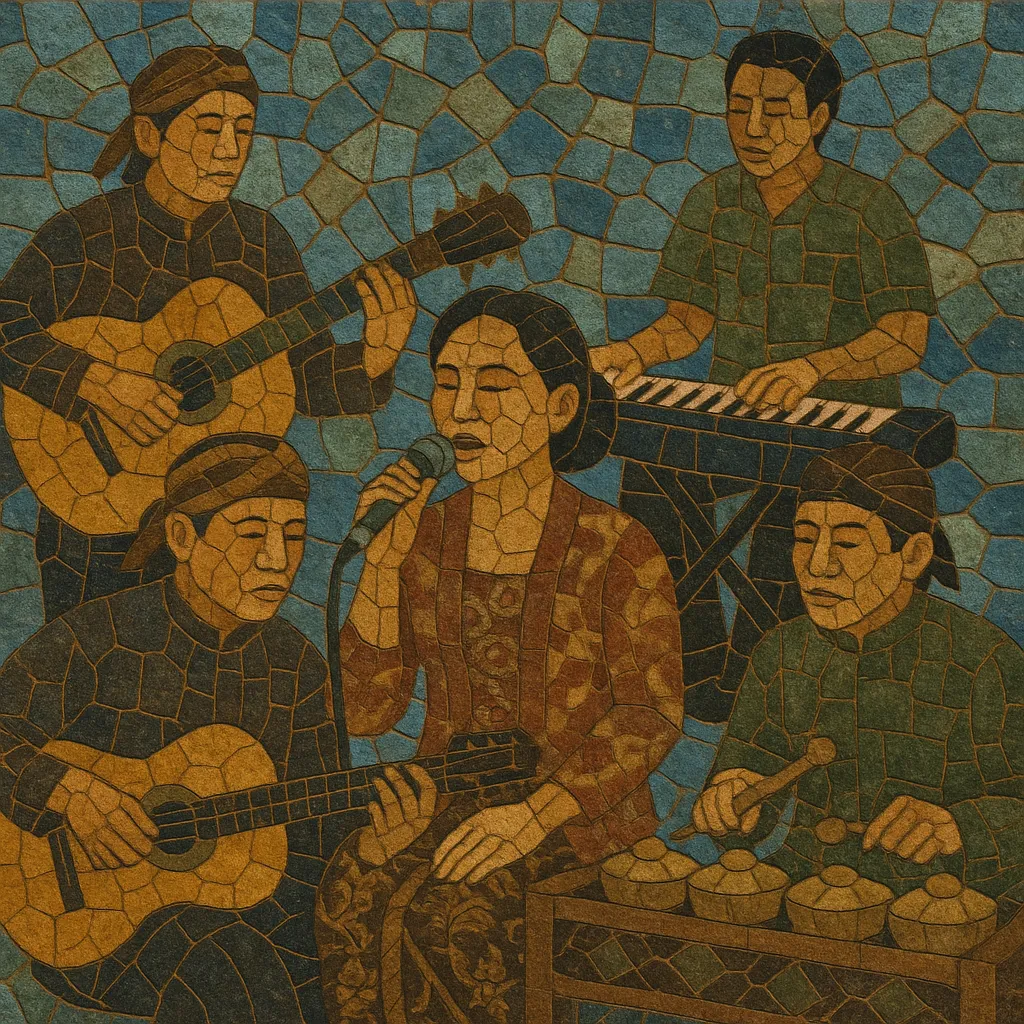Campursari is a hybrid Javanese popular music that literally means a "mixture of essences" (campur: mix, sari: essence). It blends the timbres, modes, and repertoire of Javanese gamelan and langgam Jawa with the string textures of keroncong and the backbeat and bass-driven groove of dangdut, often arranged with modern keyboards, guitars, and drum kits.
Songs are commonly sung in Javanese, feature heartfelt, conversational lyrics about love, longing, and everyday life, and sit at moderate, danceable tempos. Musically, campursari toggles between sléndro and pélog modal color, simple pop harmony on Western instruments, and dangdut-style percussion, creating a warmly nostalgic yet contemporary sound suited to weddings, neighborhood parties, and community stages.
Campursari emerged in Central Java and Yogyakarta as a grassroots response to changing social music needs: people wanted the intimacy and melodic nuance of Javanese repertoire alongside a modern, danceable band sound. The term campursari ("mixed essences") captured this ethos of blending traditional and popular idioms.
In the 1990s, the style coalesced through innovators such as Manthous, whose Campursari Gunung Kidul (CSGK) set templates for instrumentation, repertoire, and stagecraft. Arrangers began combining gamelan instruments (kendang, saron, gender) with keroncong strings (cak, cuk, flute/violin) and Western band gear (keyboard, guitar, bass, drum kit), while retaining Javanese modal flavor and dangdut-influenced rhythms.
Cheap VCD circulation, wedding circuits, and local concert series helped campursari spread widely across Central and East Java. The style’s accessible melodies and conversational Javanese lyrics made it a favorite for neighborhood festivities and regional TV programs, and it fostered a repertoire of newly composed songs alongside reinterpreted langgam and keroncong classics.
Campursari intersected more frequently with dangdut and the faster dangdut koplo groove, and its ballad sensibility influenced Javanese-language pop. Artists such as Didi Kempot popularized a deeply emotive campursari-inflected style for younger audiences, aided by social media and live-session videos. Today the genre remains a living bridge between karawitan heritage and contemporary band culture, adaptable to both intimate gatherings and large festival stages.


